2. King's College London for the Stroke Alliance for Europe. The burden of stroke in Europe. Updated 2017. Accessed January 23, 2020.
http://strokeeurope.eu.
4. Fonarow GC, Reeves MJ, Smith EE, Saver JL, Zhao X, Olson DW, et al. Characteristics, performance measures, and in-hospital outcomes of the first one million stroke and transient ischemic attack admissions in get with the guidelines-stroke. Circ Cardiovasc Qual Outcomes. 2010; 3(3):291–302. PMID:
20177051.

5. Hsieh FI, Lien LM, Chen ST, Bai CH, Sun MC, Tseng HP, et al. Get with the guidelines-stroke performance indicators: surveillance of stroke care in the Taiwan stroke registry: get with the guidelines-stroke in Taiwan. Circulation. 2010; 122(11):1116–1123. PMID:
20805428.
6. Wilkins EW, Wickramasinghe K, Bhatnagar P, Leal J, Luengo-Fernandez R, Burns R, et al. European Cardiovascular Disease Statistics 2017. Brussels: European Heart Network;2017.
7. Benjamin EJ, Virani SS, Callaway CW, Chamberlain AM, Chang AR, Cheng S, et al. Heart disease and stroke statistics-2018 update: a report from the American Heart Association. Circulation. 2018; 137(12):e67–492. PMID:
29386200.

8. Jang MU, Kang J, Kim BJ, Hong JH, Yeo MJ, Han MK, et al. In-hospital and post-discharge recovery after acute ischemic stroke: a nationwide multicenter stroke registry-base study. J Korean Med Sci. 2019; 34(36):e240. PMID:
31538419.

9. Lee KB, Lee JG, Kim BJ, Kim JY, Lee KJ, Han MK, et al. The epidemiology of fracture in patients with acute ischemic stroke in Korea. J Korean Med Sci. 2019; 34(22):e164. PMID:
31172697.
10. Giroud M, Lemesle M, Quantin C, Vourch M, Becker F, Milan C, et al. A hospital-based and a population-based stroke registry yield different results: the experience in Dijon, France. Neuroepidemiology. 1997; 16(1):15–21. PMID:
8994936.

11. Appelros P, Högerås N, Terént A. Case ascertainment in stroke studies: the risk of selection bias. Acta Neurol Scand. 2003; 107(2):145–149. PMID:
12580866.

12. Park HK, Kim SE, Cho YJ, Kim JY, Oh H, Kim BJ, et al. Quality of acute stroke care in Korea (2008–2014): retrospective analysis of the nationwide and nonselective data for quality of acute stroke care. Eur Stroke J. 2019; 4(4):337–346. PMID:
31903432.

14. Feigin VL, Lawes CM, Bennett DA, Barker-Collo SL, Parag V. Worldwide stroke incidence and early case fatality reported in 56 population-based studies: a systematic review. Lancet Neurol. 2009; 8(4):355–369. PMID:
19233729.

15. Wang WZ, Jiang B, Wu SP, Hong Z, Yang QD, Sander JW, et al. Change in stroke incidence from a population-based intervention trial in three urban communities in China. Neuroepidemiology. 2007; 28(3):155–161. PMID:
17536227.

16. Toyoda K. Epidemiology and registry studies of stroke in Japan. J Stroke. 2013; 15(1):21–26. PMID:
24324936.

17. Willeit J, Geley T, Schöch J, Rinner H, Tür A, Kreuzer H, et al. Thrombolysis and clinical outcome in patients with stroke after implementation of the Tyrol stroke pathway: a retrospective observational study. Lancet Neurol. 2015; 14(1):48–56. PMID:
25435129.

18. Smith EE, Saver JL, Cox M, Liang L, Matsouaka R, Xian Y, et al. Increase in endovascular therapy in get with the guidelines-stroke after the publication of pivotal trials. Circulation. 2017; 136(24):2303–2310. PMID:
28982689.

20. Dumont TM, Rughani AI. National trends in carotid artery revascularization surgery. J Neurosurg. 2012; 116(6):1251–1257. PMID:
22482791.

21. Witt AH, Johnsen SP, Jensen LP, Hansen AK, Hundborg HH, Andersen G. Reducing delay of carotid endarterectomy in acute ischemic stroke patients: a nationwide initiative. Stroke. 2013; 44(3):686–690. PMID:
23422089.
22. Qureshi AI, Suri MF, Nasar A, Kirmani JF, Ezzeddine MA, Divani AA, et al. Changes in cost and outcome among US patients with stroke hospitalized in 1990 to 1991 and those hospitalized in 2000 to 2001. Stroke. 2007; 38(7):2180–2184. PMID:
17525400.

23. Langham J, Reeves BC, Lindsay KW, van der Meulen JH, Kirkpatrick PJ, Gholkar AR, et al. Variation in outcome after subarachnoid hemorrhage: a study of neurosurgical units in UK and Ireland. Stroke. 2009; 40(1):111–118. PMID:
19008474.
24. Inagawa T, Shibukawa M, Inokuchi F, Tokuda Y, Okada Y, Okada K. Primary intracerebral and aneurysmal subarachnoid hemorrhage in Izumo City, Japan. Part II: management and surgical outcome. J Neurosurg. 2000; 93(6):967–975. PMID:
11117869.

25. Aguiar de Sousa D, von Martial R, Abilleira S, Gattringer T, Kobayashi A, Gallofré M, et al. Access to and delivery of acute ischaemic stroke treatments: a survey of national scientific societies and stroke experts in 44 European countries. Eur Stroke J. 2019; 4(1):13–28. PMID:
31165091.

28. Wiedmann S, Heuschmann PU, Hillmann S, Busse O, Wiethölter H, Walter GM, et al. The quality of acute stroke care- an analysis of evidence-based indicators in 260 000 patients. Dtsch Arztebl Int. 2014; 111(45):759–765. PMID:
25467052.
29. Weber R, Eyding J, Kitzrow M, Bartig D, Weimar C, Hacke W, et al. Distribution and evolution of acute interventional ischemic stroke treatment in Germany from 2010 to 2016. Neurol Res Pract. 2019; 1(1):4.

30. Rinaldo L, Brinjikji W, Rabinstein AA. Transfer to high-volume centers associated with reduced mortality after endovascular treatment of acute stroke. Stroke. 2017; 48(5):1316–1321. PMID:
28336679.

31. Adamczyk P, Attenello F, Wen G, He S, Russin J, Sanossian N, et al. Mechanical thrombectomy in acute stroke: utilization variances and impact of procedural volume on inpatient mortality. J Stroke Cerebrovasc Dis. 2013; 22(8):1263–1269. PMID:
23017430.

32. Bray BD, Campbell J, Cloud GC, Hoffman A, Tyrrell PJ, Wolfe CD, et al. Bigger, faster? Associations between hospital thrombolysis volume and speed of thrombolysis administration in acute ischemic stroke. Stroke. 2013; 44(11):3129–3135. PMID:
24052511.
33. Leake CB, Brinjikji W, Kallmes DF, Cloft HJ. Increasing treatment of ruptured cerebral aneurysms at high-volume centers in the United States. J Neurosurg. 2011; 115(6):1179–1183. PMID:
21961924.

34. Boogaarts HD, van Amerongen MJ, de Vries J, Westert GP, Verbeek AL, Grotenhuis JA, et al. Caseload as a factor for outcome in aneurysmal subarachnoid hemorrhage: a systematic review and meta-analysis. J Neurosurg. 2014; 120(3):605–611. PMID:
24093633.

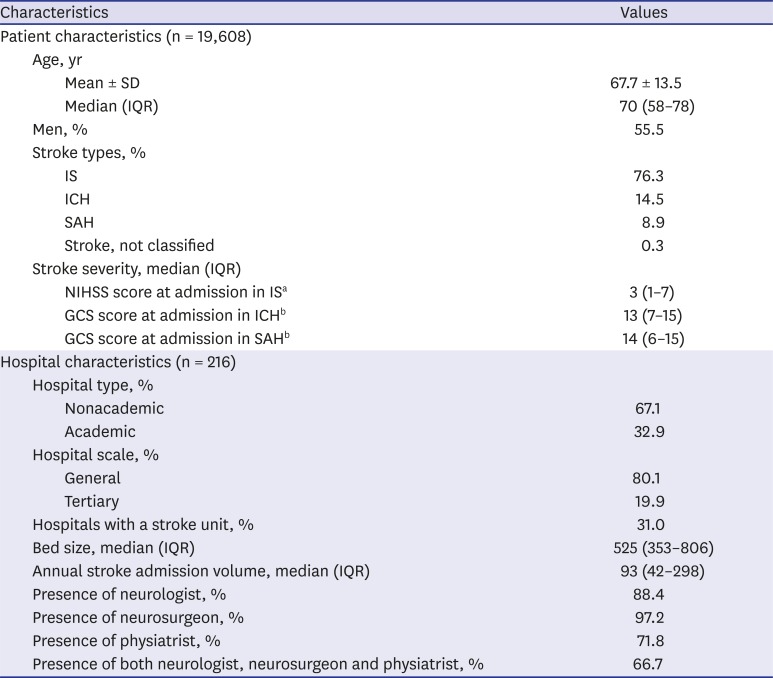
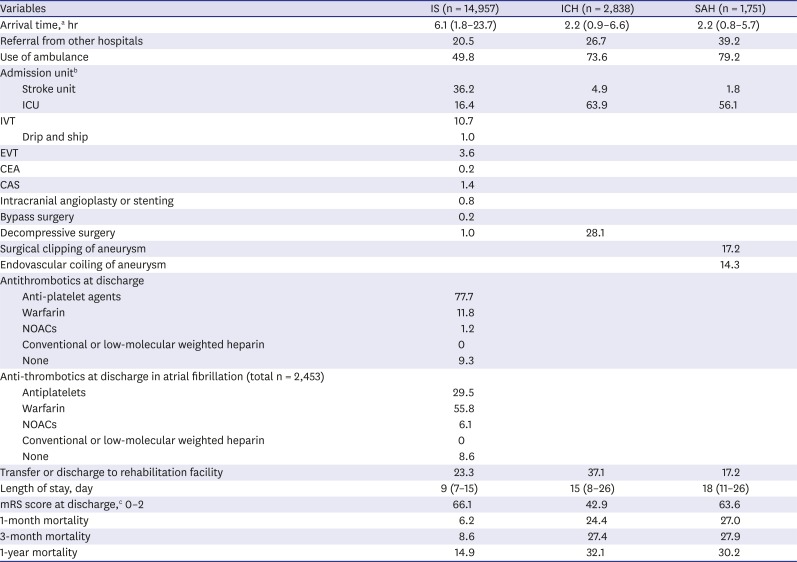
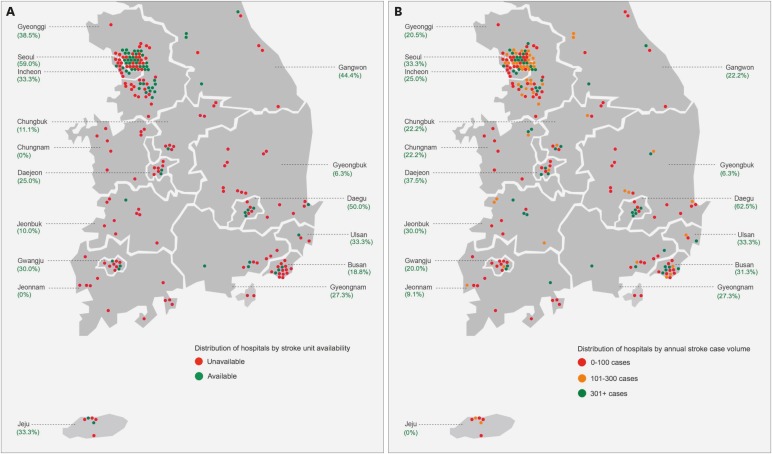




 PDF
PDF Citation
Citation Print
Print



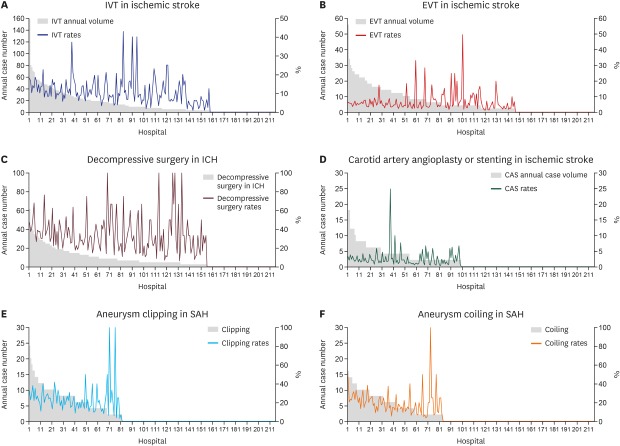
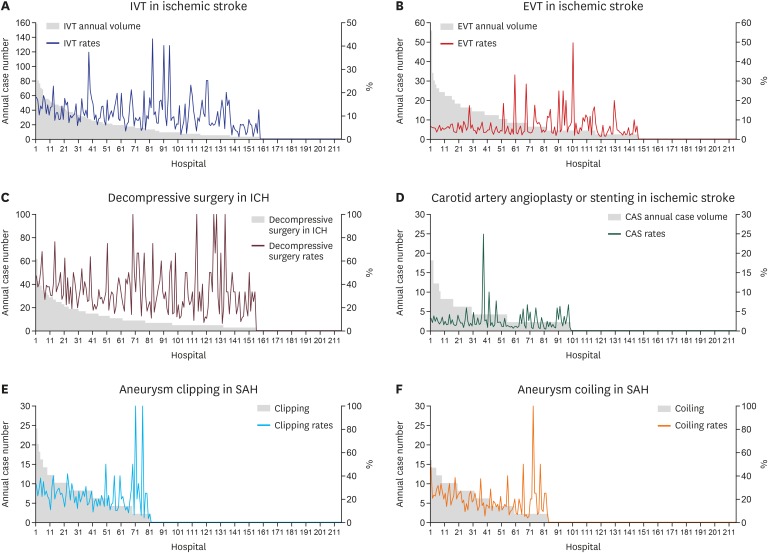
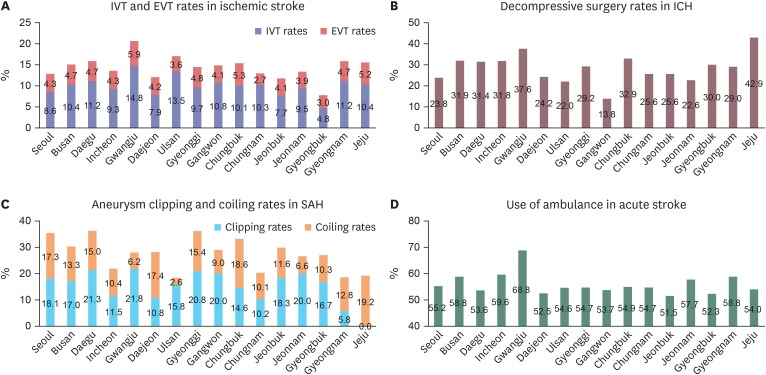
 XML Download
XML Download